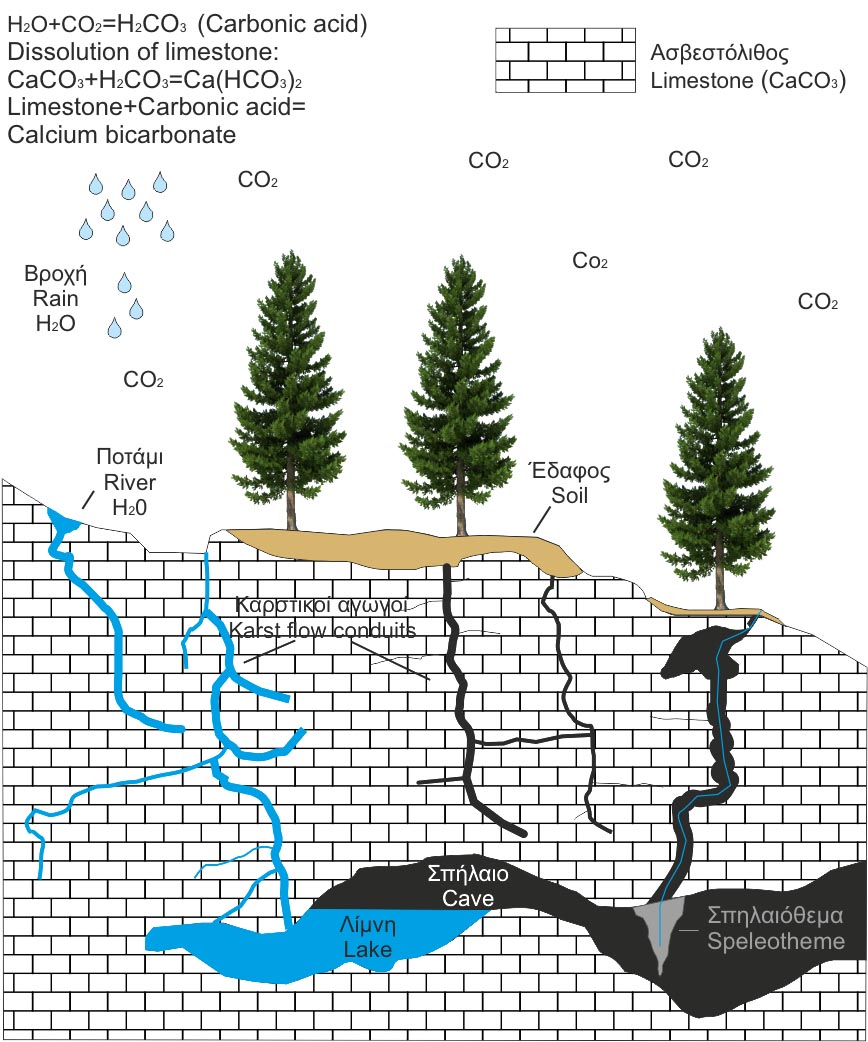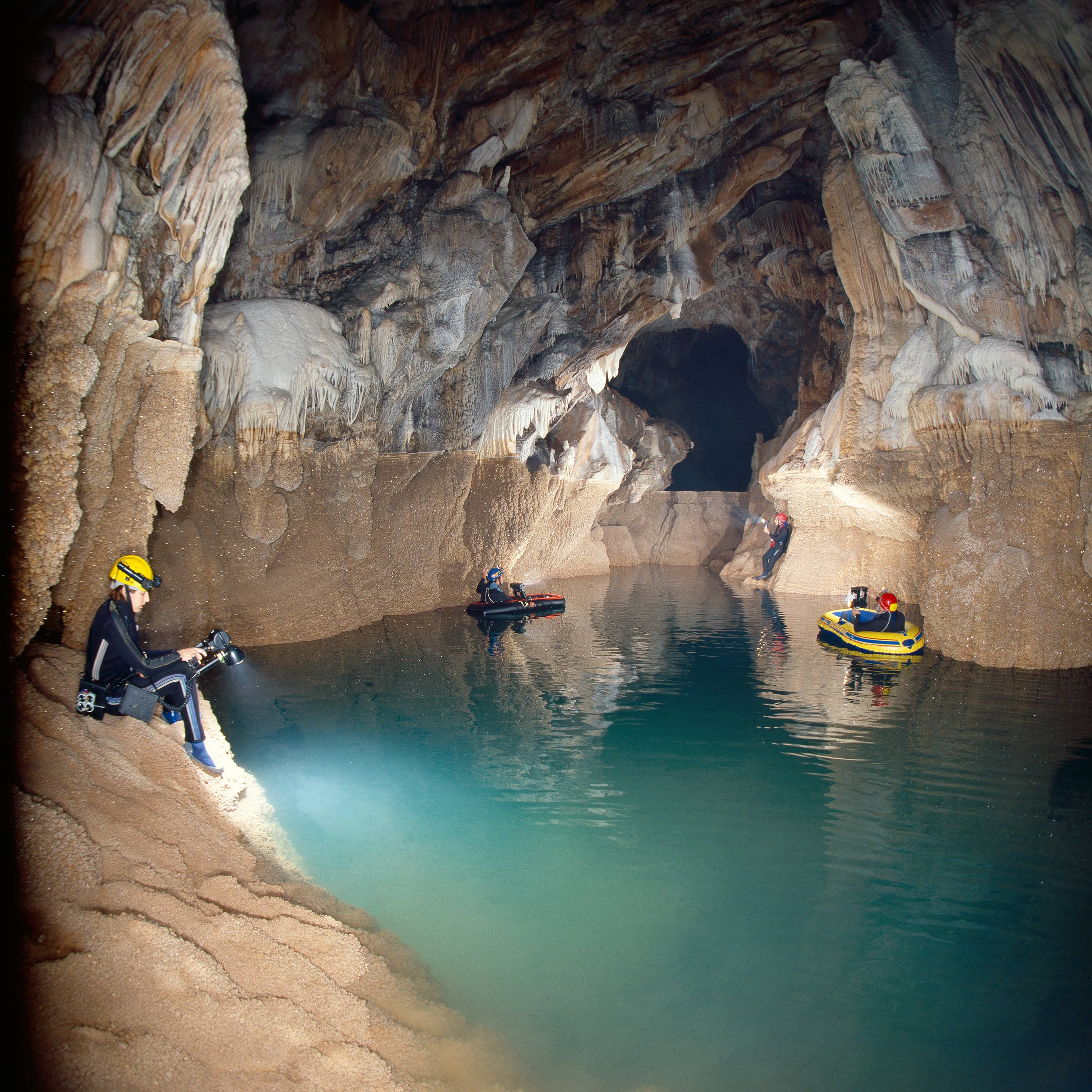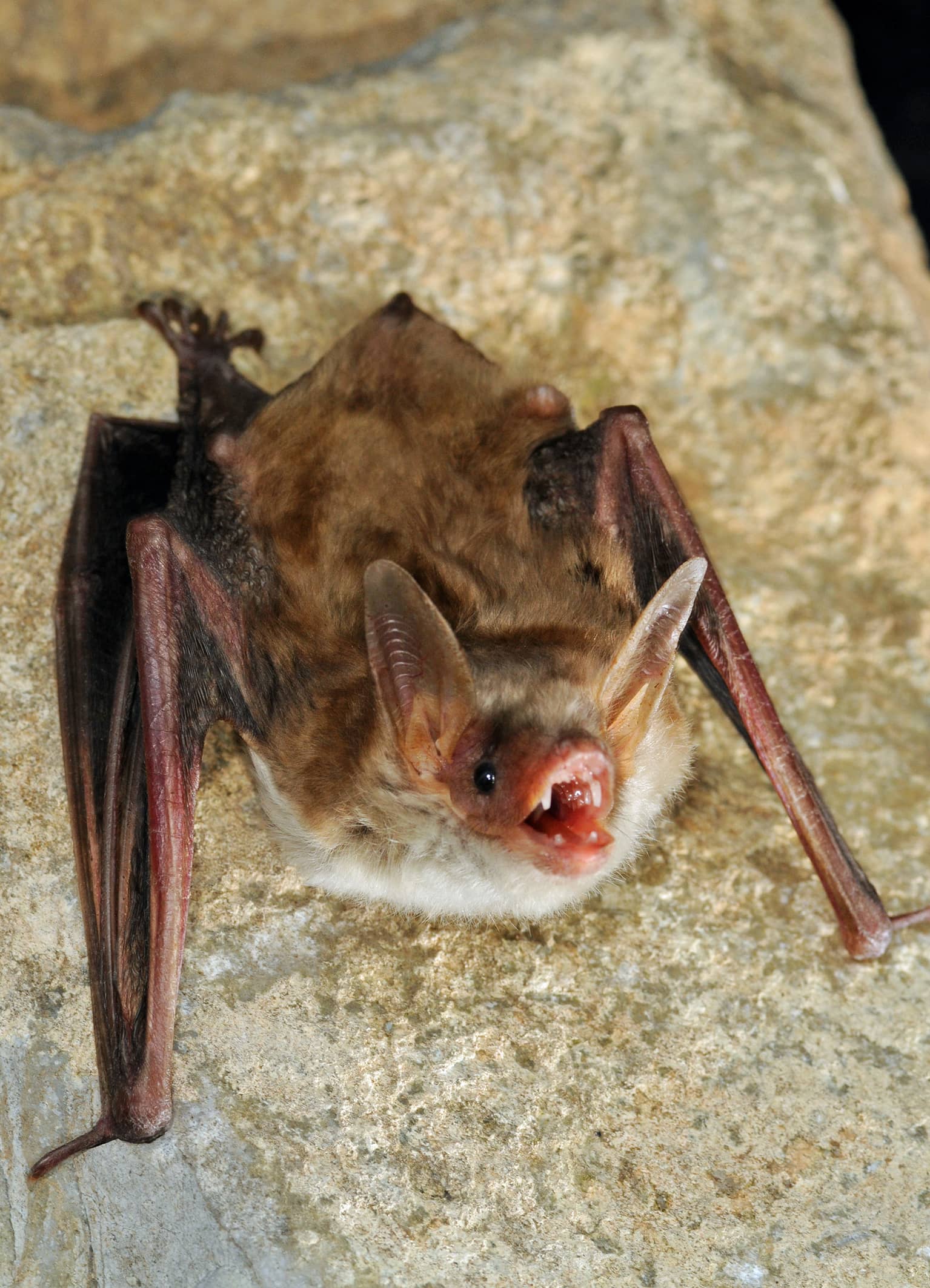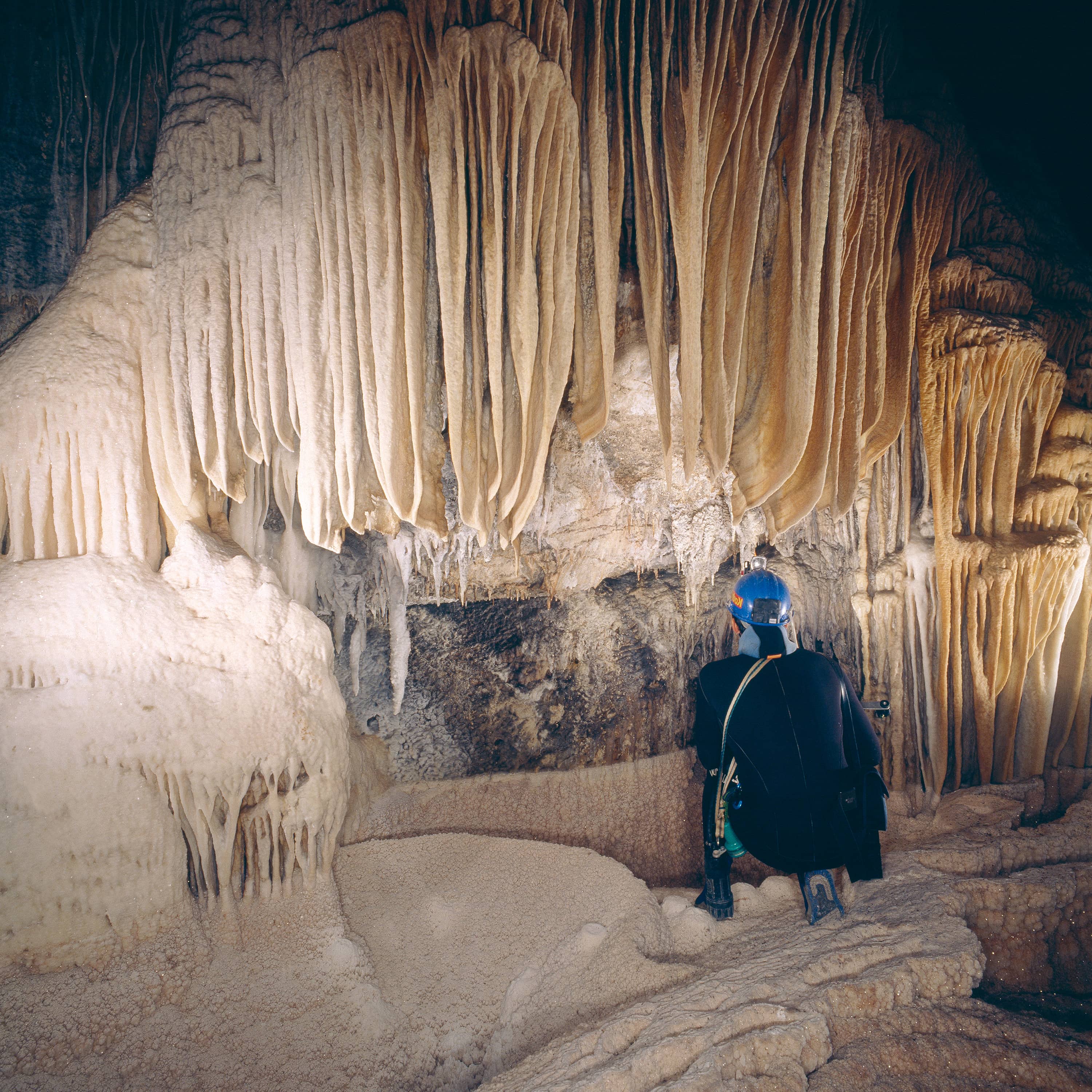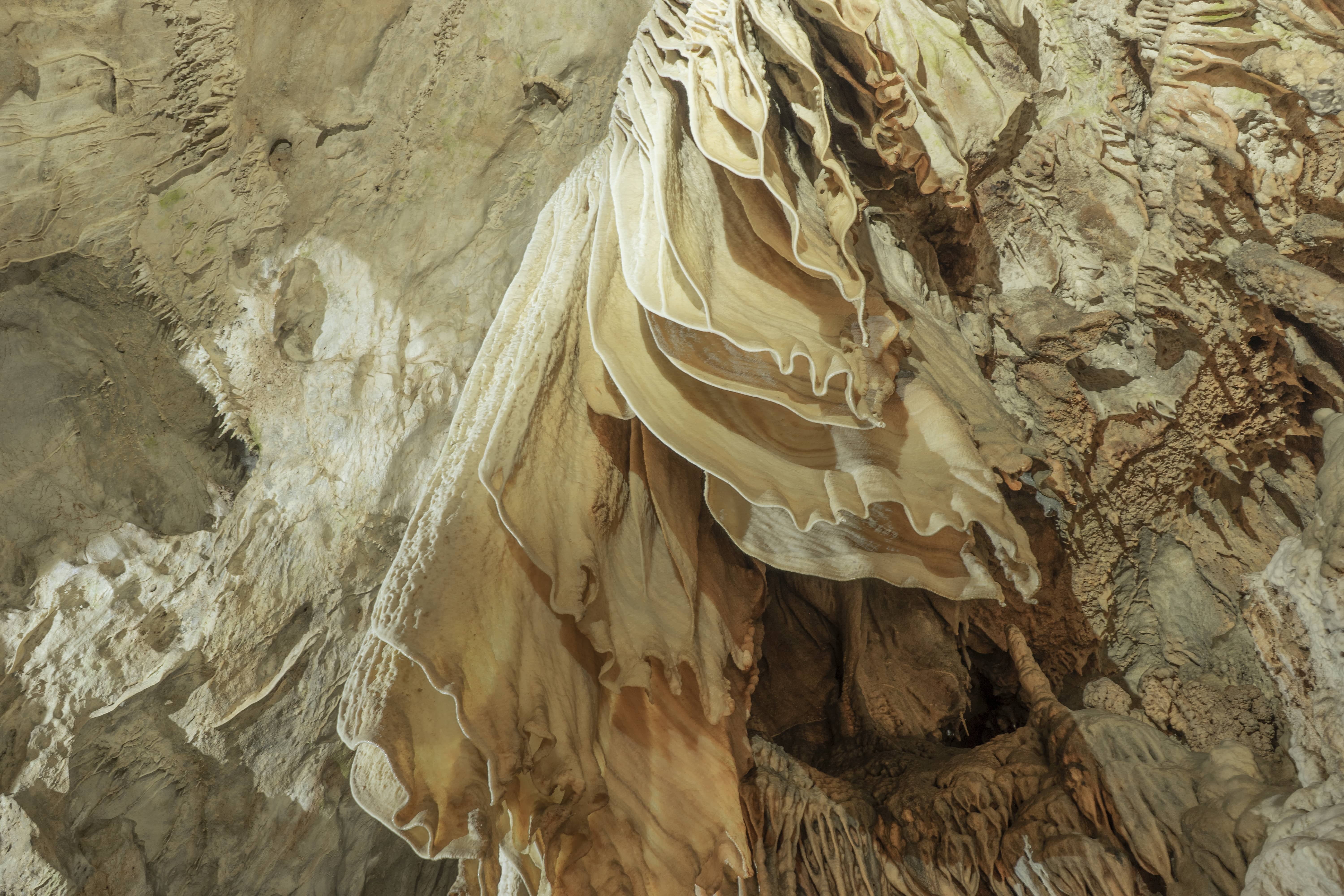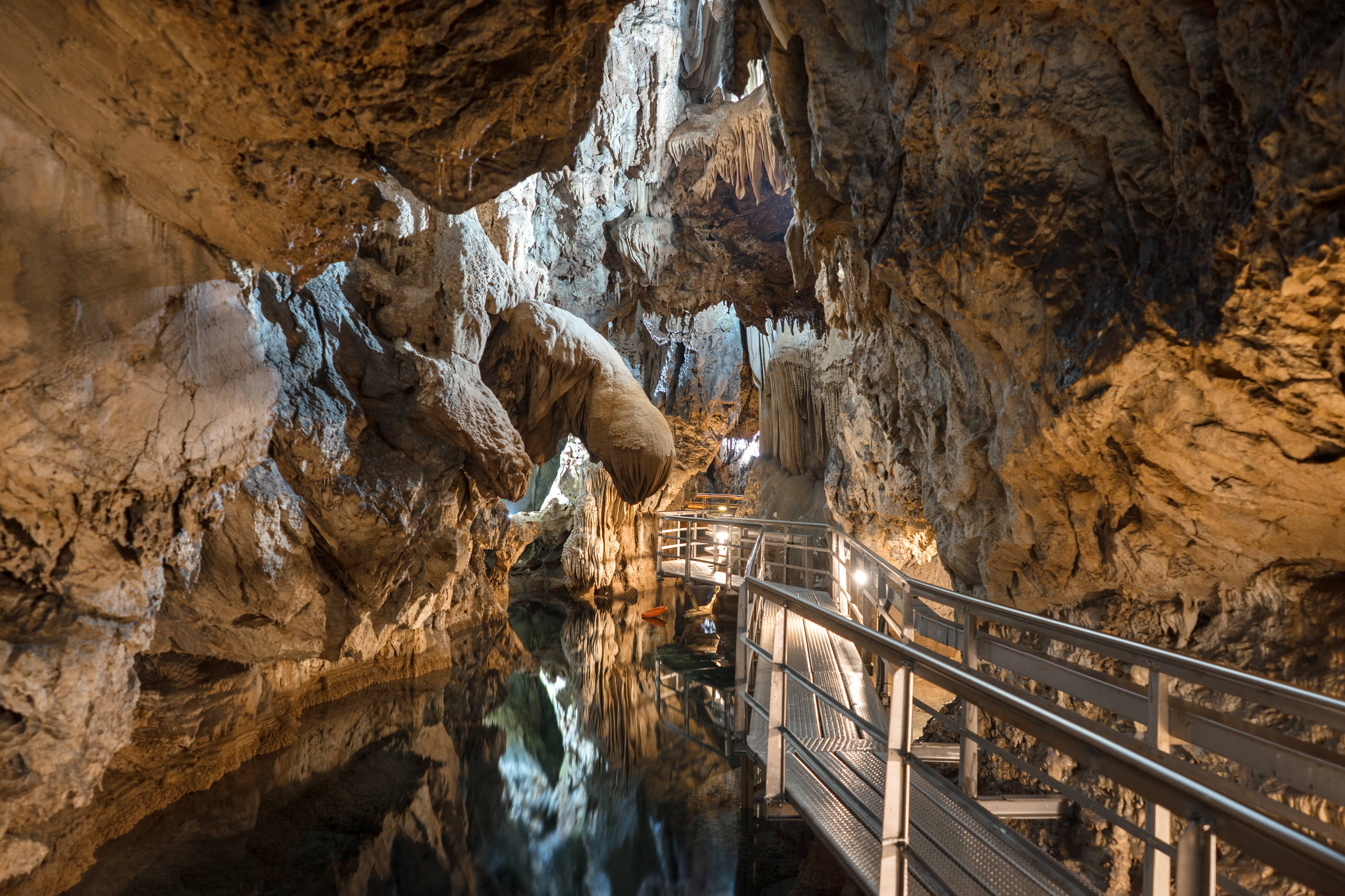AN UNDERGROUND WATER PALACE
Cave of Lakes presents a special geological, biological, archaeological, aesthetic and mythological interest. It has been proposed as a geosite of national importance. Findings of bones and vessels in the first part of the cave prove that it had been used by humans during the Neolithic period.
Geodiversity
Caves are formed mainly in carbonate rocks, such as limestones. Rainwater, which is slightly acidic, dissolves carbonate rocks when they get in contact. So, when this water flows on the surface or through the cracks of a carbonate rock (limestone), it dissolves the rock and widens the cracks, thus creating a cave.
Thus, the Cave of the Lakes formed along a fault, in limestones. The cave is 1950 meters long, covering an area of 20,000 square meters, and its elevation is 85 meters. It hosts impressive speleothems but the most impressive feature is the presence of 13 underground terraced lakes, which were formed on the cave floor due to the slow water flow velocity and the low slope of the floor, resulting in the formation of calcitic walls (gours or rimstones).
The cave consists of four parts. The first part is 80 m long and is covered by a thick layer of red earth and the second with a length of 700 m in which the 13 successive terraced lakes are found. The third and largest part of the cave is narrow and exceeds 1 km. The fourth part is 50 m long, has a low ceiling height and is filled with water (lake) and several gours.
Biodiversity
The Geosite is located within the Protected Area “SPILAIO KASTRION” (GR2320009) of the Natura 2000 network. The species Dolichopoda matsakisi, lives in the Cave. It is a Greek endemic arthropod and has been reported, only from the Cave of the Lakes and another cave of Achaia. Cave of the Lakes is of great importance concerning the Bat Fauna as it hosts one of the largest colonies of bats in Europe with more than 24.000 individuals. It hosts 10 different bat species.

